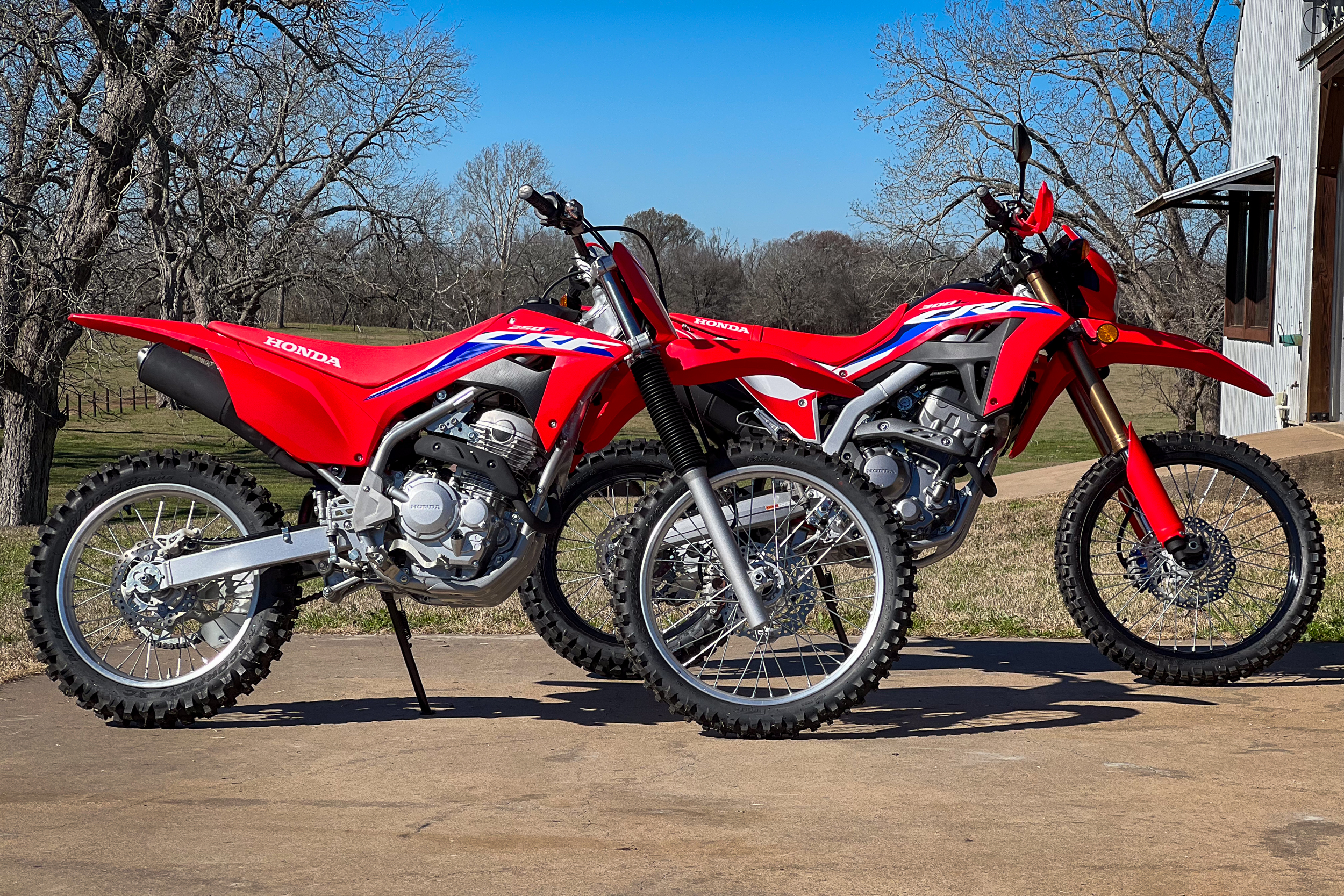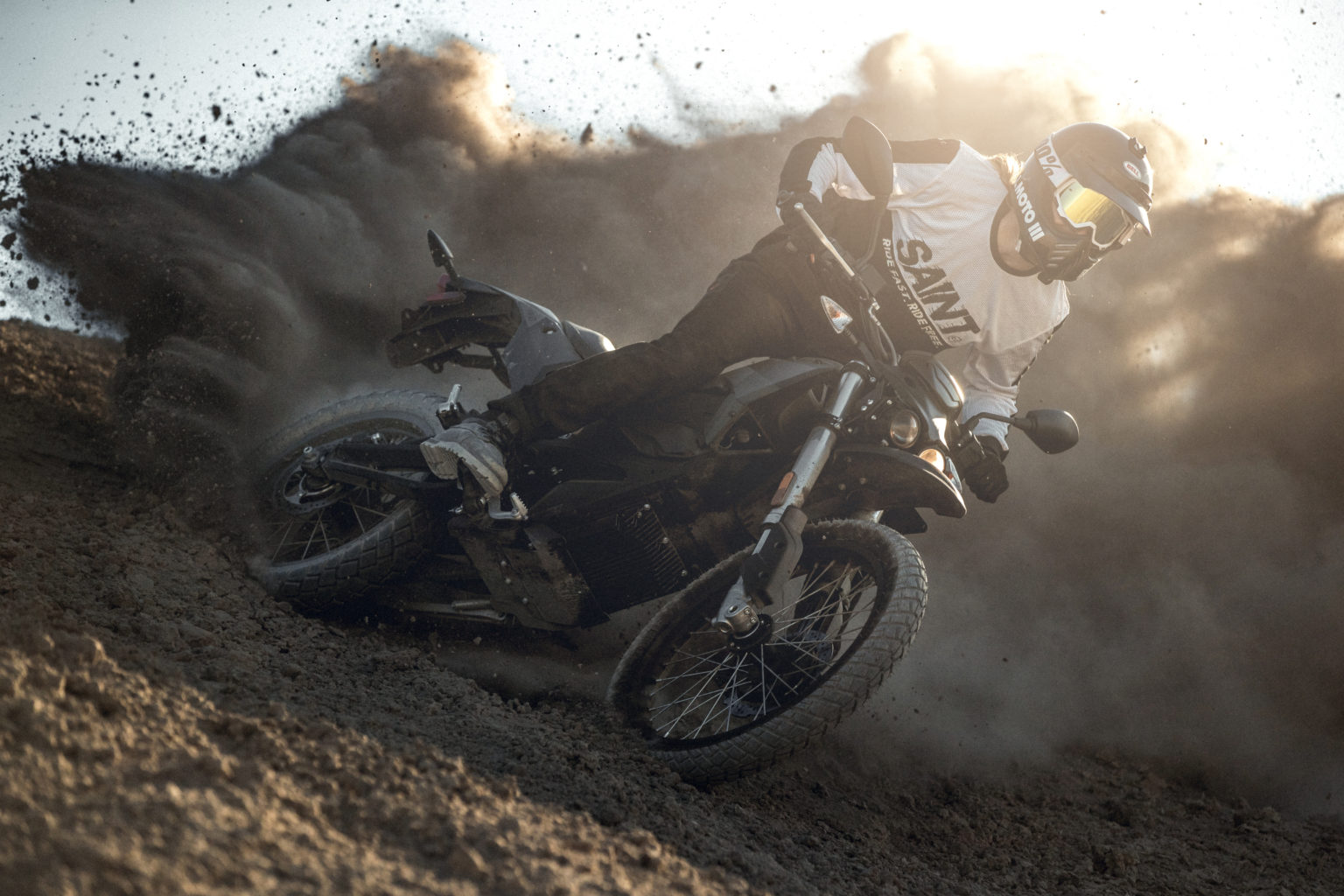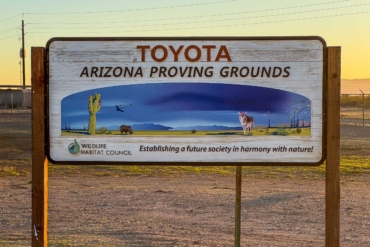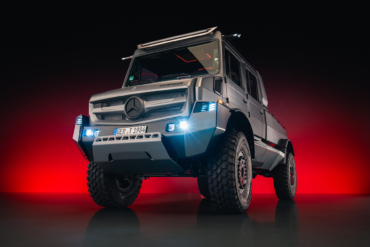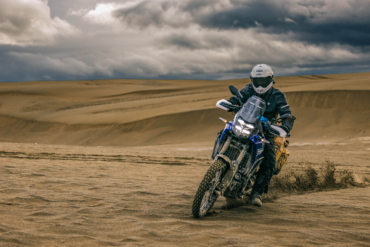When you throw a leg over a dirt bike at the shop, it’s hard to rein in reality. You twist the throttle and make braap sounds. You might feel the need for the most power and suspension travel. And you might want to bolt on every shiny aftermarket part you see on the walls or on the internet.
But hold on, partner! Before you make this major purchase, it’s wise to discern your skill and fitness levels and identify riding goals. Then, logically think through the plentiful options when buying a dirt bike.
Modern dirt bikes from the upper echelons of every manufacturer are insanely capable. But depending on your skill and fitness level, all that power, suspension travel, and other features can hinder your ability to improve riding skills. Some things may make riding more difficult, enjoyable, and potentially more dangerous.
Like many things related to risky “action” sports, it’s best to shelve the ego and make decisions based on logic rather than emotions. Even though those emotions can make you giddy with excitement, to avoid buyer’s remorse (which is super-common with motorcycles), it’s best to tone it down and honestly assess real needs before you buy.
Through my decades of intimate involvement in all aspects of dirt biking, here are my top five mistakes the up-and-coming dirt bike hero makes when purchasing a new steed.
Buying Too Much Power

It’s common to put ourselves in the best light. We may identify with racers or images in ads of the highly skilled dirt bike pilot blasting out of a turn, dirt flying, at full gas. But very few people, even those who have ridden for decades, can truly utilize all the power of the high-end offerings of each brand.
“There is no replacement for displacement,” is an old motorhead saying. But it’s still true for dirt bikes, especially single-cylinder models. Four-strokes are usually 250cc and 450cc. KTM ushered in the 350cc, and a few others have similar displacement models.
Some are water-cooled, and some are air-cooled. There are motocross bikes based on racing and trail bikes. Lately, street-legal adventure and dual-sport models have garnered a lot of attention.
In all these use cases, it’s easy to think you need the most power. After all, it’s all in that right wrist, correct? That is partially true, but riding a bike with more torque and power than your skills or fitness can handle makes riding much more physically and mentally demanding.
And double that if you’re scared of the bike. At worst, it can make riding a frightening chore instead of the freeing and exhilarating experience it could be.
If a bike has too much power, it can “get away” from you, especially off a closed or low throttle opening. Modern four-strokes with fuel injection are so responsive to the throttle, especially at lower rpm, which is where a beginner rider will spend most of the time.
Even if you are an accomplished pilot, too much power will reduce the amount of time you can maintain higher (and more fun) speeds. And, in some ways, being experienced on a bike with too much power can be more dangerous.
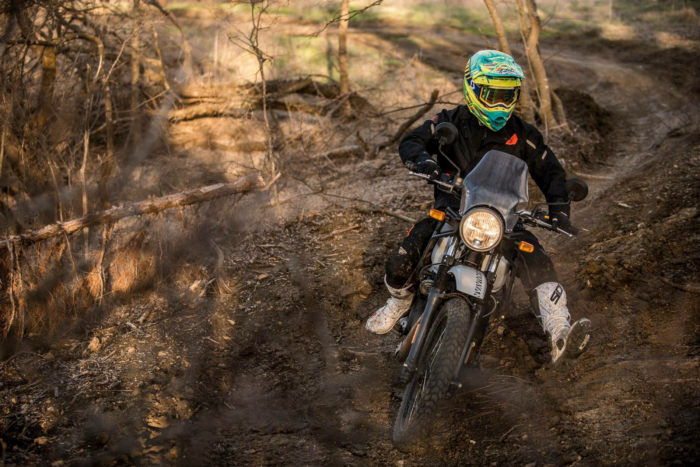
So, before you make a decision you may regret, take an honest inventory of your current skills and fitness level. Make a realistic assessment of how much you can ride and improve and what type of riding you will most often do. Feeding your ego by thinking you need a 450cc motocross race bike when you are a trail rider or beginner to intermediate track rider will bite you. I promise.
And very few people can harness the power of a 450cc motocross bike. These incredible machines can have 55 horsepower, weigh just over 200 pounds, and route all the power to a wheel that is behind your center of mass. Think about that. On paper, it reads like a lot of fun and excitement, but it also can be plenty dangerous.
I trained Andrew Short for almost a decade, and he spent 2 decades at the top of supercross, motocross, and, later in his career, rally racing. He spent most of his career in his 450s and had the skills and fitness to be in total control.
But now that he is retired, even with his skills, his amateur race bike is a 350. He also commented that for certain events, he should be on a 250. You, me, and 99.999% of the population don’t have anywhere near the skill of Short.
The most fun and potential for learning skills is when you are capable of overriding the bike. You are not scared of it; you can handle acceleration and other forces, and they never get away from you. You are riding at the limit of the bike’s capability and sometimes over it. It doesn’t tire you prematurely, and you are confident that you can handle the result no matter what happens at the controls.
So, do yourself a huge favor and rein in that excitement. Be honest with yourself, and make a decision based on reality, facts, and logic. Leave that emotion for when you do rail that turn on a bike that fits you best.
Buying Too Much Suspension
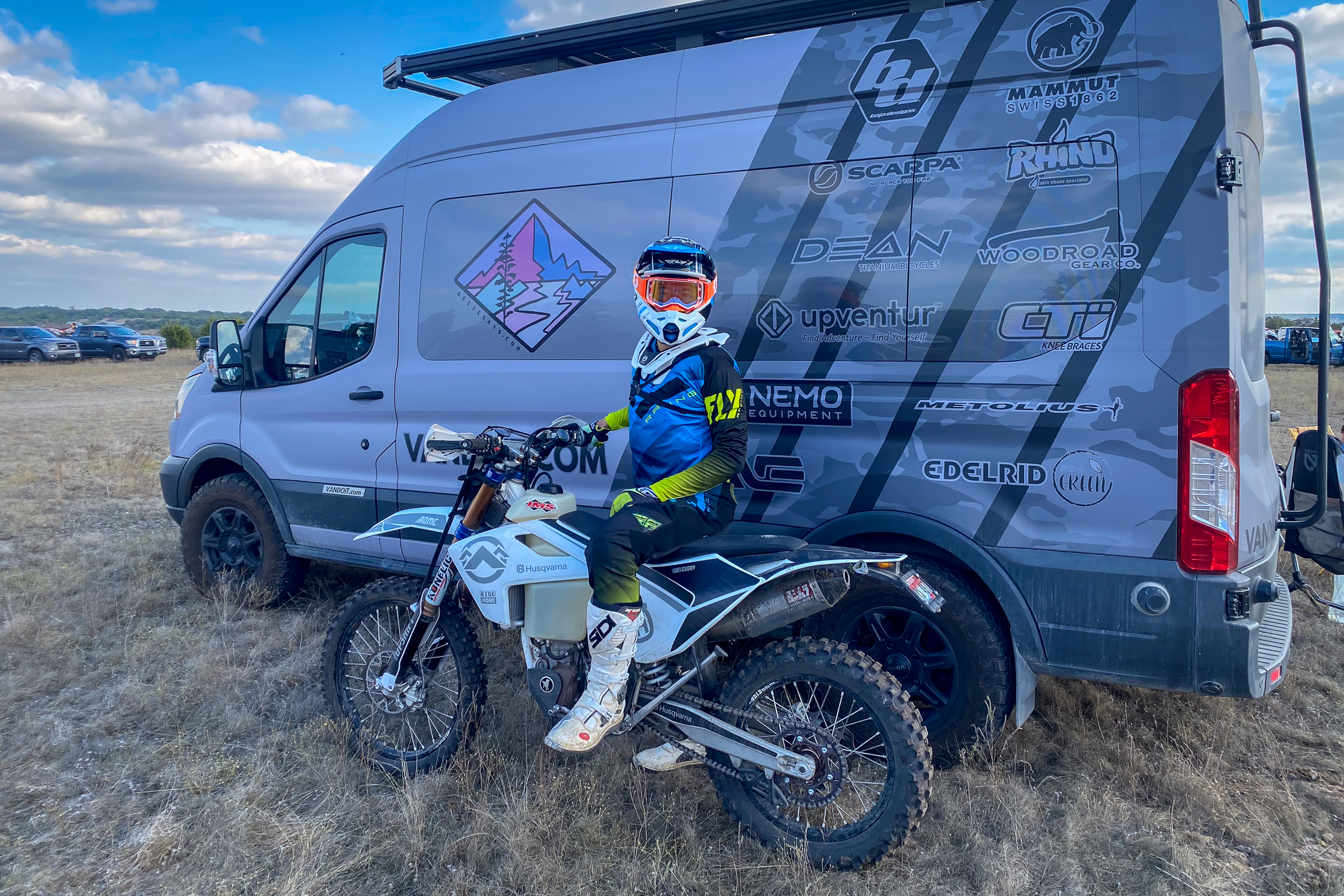
Modern dirt bikes can have over a foot of suspension travel. But do you need that? If you have too much available suspension travel but don’t use it, there are associated handling drawbacks that can make riding harder and feel less secure.
More suspension means a taller chassis height, raising the bike’s center of mass. This makes all bike handling tasks more difficult, as you have to overcome more inertia, momentum, and chassis movement to elicit the desired direction, lean, and bike attitude changes.
The increased chassis height also means a taller seat height, making it more difficult to put your feet down when you need them. Having your body weight higher up adds to the above-mentioned difficulties of a higher center of mass.
Having the right amount of suspension travel and action means that you will occasionally find the limits of the suspension. This means that you should bottom it out on the biggest, most abrupt obstacles. Otherwise, you paid for and are carrying around unused suspension travel.
Longer suspension travel bikes, like motocross race bikes, tend to have more power to match the intended customer. As described above, this can have big drawbacks.
Again, take an honest inventory of your skills, fitness, and where you will most likely ride before pulling a trigger on the bike with the most suspension travel.
Defaulting to Buying a New Motorcycle

It is very tempting to buy a brand-new dirt bike. Shiny graphics and plastics and the hauntingly low monthly payments taunt you if you finance the rig. But there are plenty of good used dirt bikes on the market, and often, they are on sale because of immediate buyer’s remorse. This means the bike is gently used, with low hours and very little wear and tear.
For quite a few years, the used dirt bike market has been weak. Used dirt bikes are selling for very low prices. Much of this has to do with the glut of bikes on the market from the COVID-19 lockdown days.
Factory financing programs often had no money down and no payments for 6 months or more. Active people were desperately in search of things they could do outside, out of crowds. But now people are back to work and realizing they don’t have the time or drive to keep riding a dirt bike.
Also, consider your forecasted rise in ability and fitness if you are beyond beginner status. Intermediate riders can progress quickly if they have the time and deliberately practice. And learning on a bike you can override is the best method. So it may make the most sense to buy a less powerful used bike for less money as you rise through the steepest part of the learning curve.
Bolting On Aftermarket Parts Immediately

Many financing programs let you roll in any aftermarket parts you purchase along with the new bike. This makes it extremely enticing to add the high-bling aftermarket parts adorning the shop’s walls. Modern four-stroke exhaust systems cost four figures, but amortizing them along with the bike seems painless.
But do you really need any aftermarket parts? You don’t even know what the bike feels like yet to know if there is a performance deficiency anywhere. And unless you are an extremely accomplished rider, I doubt adding exhaust or a new ignition will make a difference in the short term.
I understand how important suspension is on a dirt bike. It is exponentially more important than any engine modification or addition. But unless you are far outside of the spring rates of the shock and fork, the modern stock suspension is wickedly good.
And, until you ride it and can determine any shortfalls, it would be fumbling in the dark or accepting another person’s opinion of how to improve the suspension for your particular bike, riding style and ability, and body weight.
So my suggestion is to ride the bike stock and only swap parts when there is an actual, specific need. I get it. Putting new go-fast parts on your beloved steed is fun. But is it essential? Motorcycle engineers are pretty good at what they do. So, at least give it a shot before spending more money and altering an already capable machine.
Not Listening to the Dealer’s Bike Overview
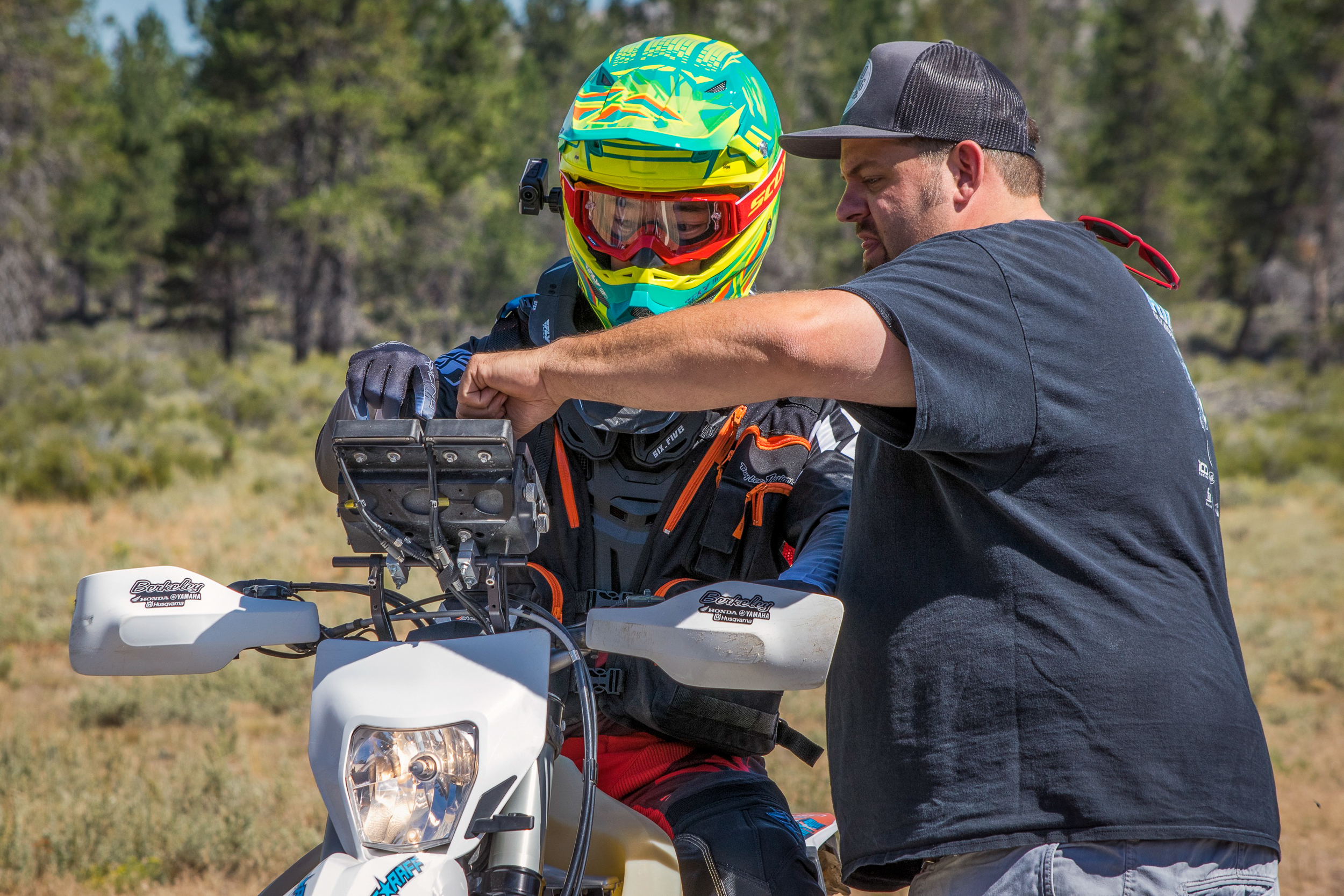
It is standard procedure to have the dealer go over the bike’s features and functions before you walk out the door with the title in hand. But I’ve been guilty so many times of not paying attention, banking on my nearly 4 decades of motorcycling experience, only to scramble on the phone or internet later when my bike feels off.
Modern dirt bikes, with fuel injection and rider aid electronics, are so much more sophisticated than the kickstart two-strokes of the not-so-distant past. And some of it isn’t at all obvious, even for a seasoned veteran.
Many bikes come with programmable ignition, and some have built-in performance trackers and trail computers. There are also suspension clicker adjustments that vary in location and potentially air spring parameters. Yes, all this is in the owner’s manual, but hearing it firsthand from a product expert will shortcut a lot of head-scratching.
You just spent a lot of money buying a dirt bike. You can afford the 20-minute walk-through that can save hours of frustration.
Conclusions on Avoiding Common Mistakes When Buying a Dirt Bike
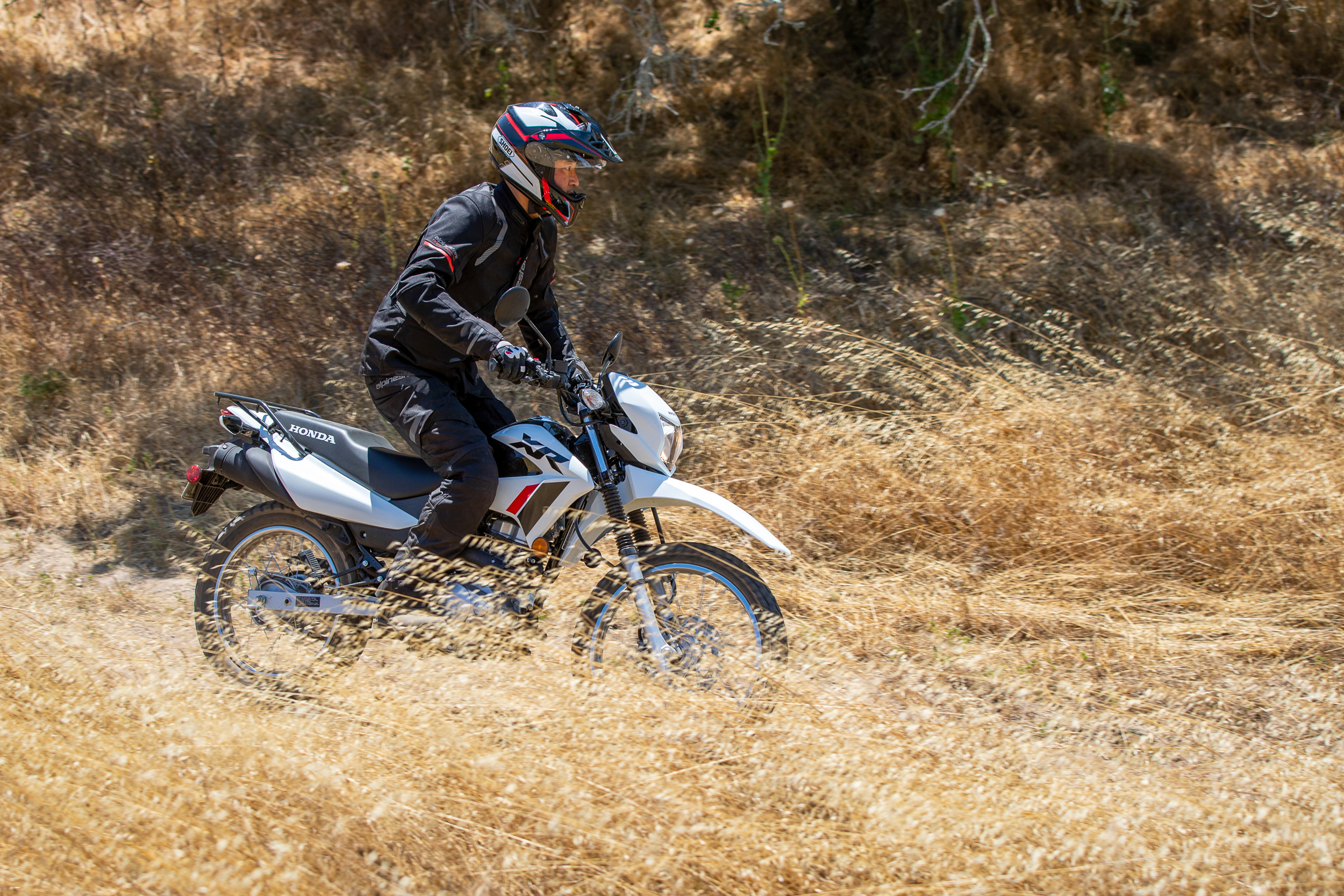
As you might have noticed, these five common mistakes when buying a dirt bike can be based on ego. We can all have visions of ourselves in action. And often we overestimate our skills and fitness or think we will rise to the level of the bike quickly.
Riding a dirt bike is complicated. Each hand and foot has multiple things to do. You are managing high acceleration, deceleration, and lateral forces. And the entire time, the terrain is doing its best to buck you off.
So, do yourself a favor when buying a dirt bike and choose one that matches your current reality. Buying a motorcycle based on ego can immensely reduce enjoyment and potentially be more dangerous.
Dirt biking is already risky. Please don’t add to it by buying too much bike, modifying it to be so, or not knowing how to adjust the bike to optimize the incredible engineering it already possesses.
You can always upgrade later instead of suffering the consequences of a bad purchase. Don’t let an ego-driven choice take away from your enjoyment of a wonderful and exhilarating outdoor activity.
